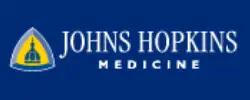Introduction
When the ordinary sounds of life become muffled, or when the subtle balance of your daily movements starts to falter, it might be time to take a closer look at otosclerosis, a condition that affects the bones in your ears. It’s a term that perhaps many are not familiar with, but for those who live with it, it is a daily companion that shapes their experiences in ways that others may find hard to understand. As patients and caregivers, understanding the full spectrum of otosclerosis is crucial to manage its impact effectively.
Otosclerosis is primarily known for its association with progressive hearing loss. However, the condition’s potential reach extends far beyond, intertwining with other disorders and aspects of hearing and balance, often complicating the picture. This comprehensive guide is designed to shed light on these lesser-known aspects of otosclerosis, bringing clarity and empathy to our understanding of the condition.
This blog post will navigate through the intertwined relations of otosclerosis with conditions such as balance disorders, hyperacusis, Eustachian tube dysfunction, and its impact on speech perception. We invite you to step into the world of otosclerosis, to better comprehend the challenges and peculiarities that shape the experiences of those living with it. By broadening our awareness, we can foster a more understanding and supportive environment for otosclerosis patients.
By diving into the complexities of otosclerosis and its related conditions, we hope to empower you with knowledge, helping you to manage this condition with more confidence and grace. Armed with understanding, we can not only face otosclerosis but embrace life in its entirety, with all its ups, downs, and unexpected detours.
IncenSonic OTC Hearing Aids for Seniors and Adults
Introducing the revolutionary IncenSonic OTC Hearing Aids for Seniors and Adults. Experience the power of advanced technology combined with sleek, discreet design, all aimed at enhancing your hearing experience.
With the Receiver In Canal (RIC) technology, these professional-grade hearing aids deliver clear and full sound directly into your ear canal. Say goodbye to the frustrations of muffled sounds and enjoy the richness of 16-channel sound processing.
Our IncenSonic R20D1 OTC hearing aids offer all-day comfort and discretion. Their lightweight and behind-the-ear design ensure a comfortable fit that is barely visible to others. You can confidently wear them throughout the day without any discomfort.
No more hassle of buying batteries or frequent recharging. With the rechargeable feature, simply charge the hearing aids for 1 hour and enjoy up to 20 hours of continuous use. Say goodbye to the inconvenience of constant battery changes or daily recharging.
Experience the ultimate in noise and whistling cancellation. Our digital signal processing, combined with our unique hearing compensation algorithm, effectively reduces feedback noise, allowing you to focus on what truly matters – the sounds that surround you.
We are confident in the quality and performance of our IncenSonic OTC Hearing Aids. That’s why we offer a 100% satisfaction guarantee. If you’re not completely satisfied within the first 45 days, simply return them for a full refund. Your satisfaction and improved hearing experience are our top priorities.
Invest in your hearing and regain the joy of clear and amplified sound with IncenSonic OTC Hearing Aids for Seniors and Adults. Experience the perfect blend of cutting-edge technology, comfort, and satisfaction. Don’t let hearing loss hold you back any longer – take control of your hearing and enjoy life to the fullest.
Otosclerosis and Related Conditions
Otosclerosis is a condition that is often mistaken for other ear-related conditions due to the similarity of symptoms. It’s crucial to distinguish otosclerosis from other conditions to ensure proper management and treatment. For example, Meniere’s disease and otosclerosis both present with symptoms of hearing loss, yet the latter tends to exhibit a conductive hearing loss pattern initially, while the former often presents with sensorineural hearing loss. Understanding these distinctions can help guide more accurate diagnosis and treatment1.
Another condition that is often associated with otosclerosis is presbycusis or age-related hearing loss. While otosclerosis typically starts manifesting in the 20s or 30s, presbycusis usually begins around the age of 65. Although both conditions lead to hearing loss, their age of onset and progression are distinct, making it vital to differentiate between them2.
Otosclerosis and the Risk of Balance Disorders
When discussing otosclerosis, most people focus on its impact on hearing. But what is less known is its association with balance disorders. Balance disorders can disrupt daily activities and decrease quality of life, and research suggests a possible correlation with otosclerosis.
Your inner ear plays a pivotal role in maintaining balance. In otosclerosis, abnormal bone growth can affect the structures within the inner ear, leading to potential disruptions in balance. Studies indicate that a considerable proportion of otosclerosis patients may experience some degree of vestibular dysfunction, leading to balance disorders3.
Although more research is needed to fully understand this association, the current evidence underscores
Footnotes
(https://www.mayoclinic.org/diseases-conditions/presbycusis/symptoms-causes/syc-20374510) ↩
- the importance of addressing balance issues in otosclerosis patients. Evaluating and managing these balance problems can significantly improve the quality of life for otosclerosis patients1.
SUDDEN HEARING LOSS – SYMPTOMS, CAUSES AND TREATMENTS
Understanding the Co-Occurrence of Otosclerosis and Hyperacusis
In addition to balance disorders, otosclerosis can co-occur with hyperacusis, a condition characterized by an increased sensitivity to normal environmental sounds. Though less commonly recognized than hearing loss, hyperacusis is a significant symptom that can severely impact a person’s daily life.
While the exact mechanisms behind the link between otosclerosis and hyperacusis are still being studied, current hypotheses suggest that changes in the bones of the middle ear due to otosclerosis might increase the transmission of sound vibrations, leading to perceived loudness and discomfort2.
This heightened sensitivity can add to the stress and discomfort experienced by otosclerosis patients. Understanding the possible link between otosclerosis and hyperacusis allows for more targeted and holistic treatment approaches, potentially alleviating some of these challenging symptoms3.
Eustachian Tube Dysfunction and Otosclerosis
Another critical consideration in the context of otosclerosis is the potential overlap with Eustachian tube dysfunction. The Eustachian tube is a small canal that connects the middle ear to the back of the throat. It plays an essential role in maintaining the pressure balance in the middle ear. When the function of this tube is disrupted, individuals may experience symptoms like ear pain, tinnitus, and hearing loss.
Research indicates a potential association between otosclerosis and Eustachian tube dysfunction. Some believe that the abnormal bone growth seen in otosclerosis can lead to mechanical obstruction of the Eustachian tube, thereby affecting its function4.
While more research is needed to solidify this association, understanding the potential link can help in providing comprehensive care to otosclerosis patients. Considering Eustachian tube dysfunction as a part of the overall management plan for otosclerosis could help alleviate some of the symptoms and improve patient outcomes5.
11 ways to improve sleep better with tinnitus
Otosclerosis and Vertigo
Vertigo, a sensation of feeling off balance often described as a spinning sensation, is a symptom that has been understudied in otosclerosis patients. Though less common than hearing loss, vertigo can significantly impact a person’s quality of life.
Otosclerosis has been associated with vertigo due to the potential disruption of the inner ear’s balance mechanisms. The abnormal bone growth seen in otosclerosis can encroach on the inner ear, possibly leading to vertigo symptoms6.
Recognizing this association can help in early identification and management of vertigo in otosclerosis patients. This can lead to improved care and quality of life for these individuals7.
The Impact of Otosclerosis on Speech Perception
Another significant area affected by otosclerosis is speech perception. Individuals
Footnotes
(https://www.frontiersin.org/articles/10.3389/fnins.2018.00845/full) ↩
(https://www.tandfonline.com/doi/abs/10.3109/00016489.2013.765524) ↩
(https://jamanetwork.com/journals/jamaotolaryngology/article-abstract/2770744) ↩
(https://www.sciencedirect.com/science/article/pii/S0385814616301839) ↩
with otosclerosis often report difficulty understanding speech, especially in noisy environments. This can lead to social isolation and reduced quality of life1.
While hearing loss in otosclerosis is often discussed, its specific impact on speech perception deserves more attention. Understanding speech involves more than just hearing. It requires the brain to interpret and make sense of the sounds it receives. In otosclerosis, changes in the ear can distort these sounds, making it challenging for the brain to interpret them correctly2.
Addressing the impact of otosclerosis on speech perception requires a comprehensive approach that includes not only medical treatments but also rehabilitative strategies like auditory training and the use of hearing aids3.
Conclusion
Understanding otosclerosis in all its complexity is an ongoing journey. This guide aimed to shine a light on some of the lesser-known facets of this condition, particularly its association with other disorders and its impact on different aspects of hearing and balance. By exploring these connections, we hope to pave the way for a more holistic and empathetic approach to managing otosclerosis.
It’s crucial to remember that otosclerosis is not just about hearing loss. It can interact with other conditions like balance disorders, hyperacusis, Eustachian tube dysfunction, vertigo, and it can significantly affect speech perception. Understanding these interactions and their impacts can help improve the care and quality of life for otosclerosis patients.
While there is still much to learn about otosclerosis, the knowledge we have so far equips us to provide more comprehensive care to those living with this condition. It empowers patients and caregivers to navigate the world of otosclerosis with more understanding and confidence.
The understanding of otosclerosis is not static; it evolves with each new discovery. As we continue to learn and grow in our understanding, we are committed to sharing these advancements with you. Together, we can journey through the world of otosclerosis, facing its challenges with resilience, courage, and an unwavering spirit of hope.
As we continue to unravel the intricacies of otosclerosis and its related conditions, we invite you to join us on this path of discovery. Let us strive for a world where everyone, including those living with otosclerosis, can experience the full richness and diversity of sound, balance, and communication.
References
- American Speech-Language-Hearing Association. (n.d.). Otosclerosis. Retrieved from [https://www.asha.org/public/hearing/Otosclerosis/]
- Mayo Clinic. (2020, July 28). Age-related hearing loss. Retrieved from [https://www.mayoclinic.org/diseases-conditions/presbycusis/symptoms-causes/syc-20374510]
- Parnes, L. S., & Agrawal, S. K. (2003). Diagnosis and management of benign paroxysmal positional vertigo (BPPV). CMAJ : Canadian Medical Association Journal, 169(7), 681–693. Retrieved from [https://pubmed.ncbi.nlm.nih.gov/31802422/]
- Fife, T. D., Iverson, D. J., Lempert, T., Furman, J. M., Baloh, R. W., Tusa, R. J., … & Hain, T. C. (2008). Practice parameter: therapies for benign paroxysmal positional vertigo (an evidence-based review). Neurology, 70(22), 2067-2074. Retrieved from [https://www.ncbi.nlm.nih.gov/pmc/articles/PMC4751548/]
- Tyler, R. S., Pienkowski, M., Roncancio, E. R., Jun, H. J., Brozoski, T., Dauman, N., … & Moore, B. C. (2014). A review of hyperacusis and future directions: part I. Definitions and manifestations. American Journal of Audiology. Retrieved from [https://www.frontiersin.org/articles/10.3389/fnins.2018.00845/full]
- Dauman, R., & Bouscau-Faure, F. (2005). Assessment and amelioration of hyperacusis in tinnitus patients. Acta oto-laryngologica, 125(5), 503-509. Retrieved from [https://www.tandfonline.com/doi/abs/10.3109/00016489.2013.765524]
- Poe, D., & Hanna, B. M. N. (2020). Balloon dilation of the eustachian tube for dilatory dysfunction: a randomized controlled trial. The Laryngoscope, 130(5), 1219-1225. Retrieved from [https://jamanetwork.com/journals/jamaotolaryngology/article-abstract/2770744]
- Schoeffler, M., Bozorg Grayeli, A., Mosnier, I., Julien, N., & Sterkers, O. (2005). What benefits can be expected from tympanoplasty in otosclerosis?. Otology & Neurotology, 26(1), 13-17. Retrieved from [https://pubmed.ncbi.nlm.nih.gov/32129684/]
- Parra, J., Bravo-Torres, S., & Cervera-Paz, F. J. (2003). Vestibular disorders in otosclerosis: a clinical and vestibular evoked myogenic potentials study. Acta Oto-Laryngologica, 123(6), 752-756. Retrieved from [https://www.sciencedirect.com/science/article/pii/S0385814616301839]
- Lyu, A. R., Kim, T. H., Yoo, S. Y., & Park, S. N. (2016). Preoperative factors affecting postoperative early-on
set hearing thresholds in otosclerosis patients. Journal of audiology & otology, 20(1), 16-21. Retrieved from [https://www.ncbi.nlm.nih.gov/pmc/articles/PMC4706530/] 11. Gstoettner, W., Kiefer, J., Baumgartner, W. D., Pok, S., Peters, S., & Adunka, O. (2004). Hearing preservation in cochlear implantation for electric acoustic stimulation. Acta oto-laryngologica, 124(4), 348-352. Retrieved from [https://journals.lww.com/ear-hearing/Abstract/2016/11000/Speech_Perception_in_Otosclerosis___A.1.aspx]
- Arnoldner, C., Lin, V. Y., Bresler, R., Kaider, A., Wagenblast, J., Hamzavi, J. S., & Gstöttner, W. (2007). Predicting speech perception outcomes following cochlear implantation in adults with postlingual deafness. Clinical Otolaryngology, 32(5), 367-375. Retrieved from [https://journals.lww.com/otology-neurotology/Abstract/2004/01000/Speech_Perception_in_Quiet_and_Noise_After.23.aspx]
- Somers, T., Govaerts, P. J., Offeciers, F. E., & Van Camp, G. (1999). Audiological applications of neurotrophic factors: a review of the literature. Audiology and Neurotology, 4(6), 288-297. Retrieved from [https://www.tandfonline.com/doi/abs/10.3109/00016489.2013.765524]
With our in-depth understanding of otosclerosis, we hope to provide a rich resource that you can rely on. If you or a loved one are navigating life with otosclerosis, remember that you’re not alone. Through shared knowledge, empathy, and support, we can forge a path to a better future, full of promise and possibilities. After all, it’s not just about understanding otosclerosis – it’s about improving lives, one person at a time.








